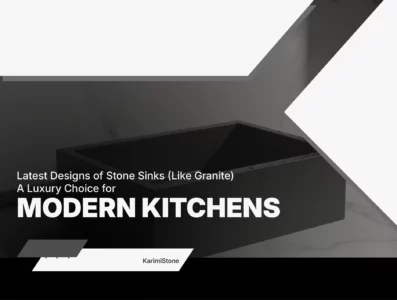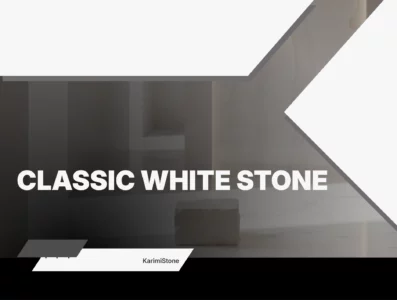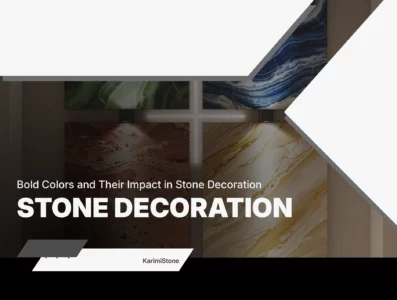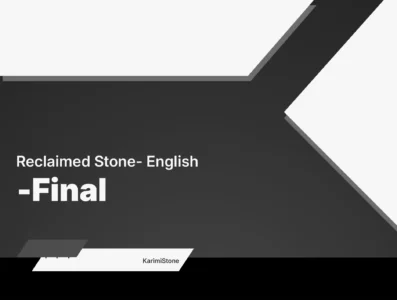
Post Page
Carrara Marble : Discovering the Beauty and History of Carrara Marble

Carrara marble is one of the world’s most famous natural stones, admired for its pure white color and delicate gray veins. This beautiful marble has been quarried for over 2,000 years in the mountains near the city of Carrara, located in the Tuscany region of Italy. Since Roman times, Carrara marble has been used to create some of the most impressive sculptures and buildings in history.
A Rich History of Quarrying
The mountains outside Carrara have more than 650 quarry sites, making it the largest marble-producing area in the world. These quarries have supplied marble for famous monuments like the Pantheon and Trajan’s Column in Rome. Even Michelangelo himself came to these mountains to personally select marble for his masterpieces. His iconic statue, the Pietà, was carved from Carrara marble.
Throughout the centuries, marble extraction methods have changed. In the early days, large blocks were separated by hand tools and simple techniques. Later, explosives were introduced, but they caused damage and waste. By the late 1800s, wire saws were invented, reducing debris and making quarrying safer and more efficient. Today, modern diamond wire cutting systems are used to remove giant marble blocks without harming the surrounding stone.
Sustainable and Carefully Managed Quarrying
Italy’s marble industry is carefully managed to protect the environment. Before mining, companies must deposit money to cover land restoration and environmental protection. A portion of each marble sale also goes toward taxes used for reforestation, water purification, and fixing roads affected by quarry activities. In some places, old quarries have been turned into tourist attractions, where visitors can explore underground tunnels and learn about marble extraction.
The Art and Architecture of Carrara Marble
Carrara marble has been used in many world-famous structures, including Milan Cathedral, St. Peter’s Basilica, and the Leaning Tower of Pisa. Its beauty comes from its natural patterns and smooth, polished surface, making it a favorite for sculptors and architects. Walking through Italian cities, you’ll notice that marble is everywhere—from statues and fountains to streets and facades. For Italians, marble is not just a material; it’s a symbol of culture, history, and artistic pride.
In Italy, marble quarries are quarried using both open-pit and underground techniques. Unlike some countries, Italy bans the use of explosives for marble extraction to avoid damaging the stone. Massive blocks, sometimes weighing up to 350 tons, are carefully cut and transported using cranes, bulldozers, and specialized equipment.
Carrara’s Different Marble Types
Carrara marble comes in different varieties, each with its own color and texture. The five main types include:
- White Marble: Pure and clean, perfect for sculptures.
- Gray and Veined Marble: Adds depth with subtle patterns.
- Brecciated Marble: Swirling designs like Arabescato and Calacatta.
- Cipollino Marble: Characterized by its layered appearance.
- Historical Marbles: Rare colors like red or black from specific regions.
The value of Carrara marble depends on its purity, color, and veining. Blocks from quarries like Fantiscritti, known for producing Michelangelo’s marble, are considered the highest quality.
From Quarry to Masterpiece
Extracting marble is a slow and careful process. First, large blocks are separated with diamond-tipped chainsaws and cables. Then, they are cut into smaller blocks for easier transport. Moving these heavy stones is no small task. In the past, workers used wooden sledges and ropes to slide blocks down steep mountain paths, a dangerous job that required great skill. Today, trucks and cranes have replaced these traditional methods, but some communities still honor their heritage with annual reenactments of this old practice.
Why Carrara Marble Is Special
Carrara marble is well-known around the world because of its long history, high quality, and beautiful look. With deposits stretching over 58 kilometers and rising 2,000 meters high, the Carrara mountains hold an enormous supply of this valuable stone. Every year, more than 6 million tons of marble are extracted, making Italy a leader in marble production.
This marble is not only used for art and architecture but also for modern interior design, luxury countertops, flooring, and furniture. Its classic beauty continues to inspire designers and builders around the world.
The Quality Work of Negin Sang Karimi (Karimi Stone)
When it comes to producing high-quality natural stone, Negin Sang Karimi (Karimi Stone) is a trusted company. With many years of experience in stone cutting and exporting, Karimi Stone offers a wide variety of products, including marble, travertine, limestone, and granite. The company uses modern machines and strong quality checks to make sure every slab, tile, or block meets international standards. Whether for flooring, wall coverings, sculptures, or building projects, Karimi Stone provides natural stones that match customer needs, with safe packing and worldwide delivery. Their reliable work makes them a popular choice for customers looking for beautiful, strong stones from Iran’s top quarries.
Visiting the Marble Mountains
Visiting the Carrara quarries feels like stepping into another world. The bright white slopes look like snowy mountains from far away, but up close, they reveal huge walls of marble. Big yellow cranes and trucks seem small next to the giant cliffs. Some quarries are open to tourists, allowing visitors to ride jeeps into the heart of the mountain, explore deep caves, and see how marble is still being mined today.
Seeing the quarries in person gives a deeper understanding of the hard work and skill needed to bring marble from the mountain to a finished product. It reminds us that behind every marble statue, countertop, or floor is a long story of nature, history, and craftsmanship.









 Online Catalogue
Online Catalogue
